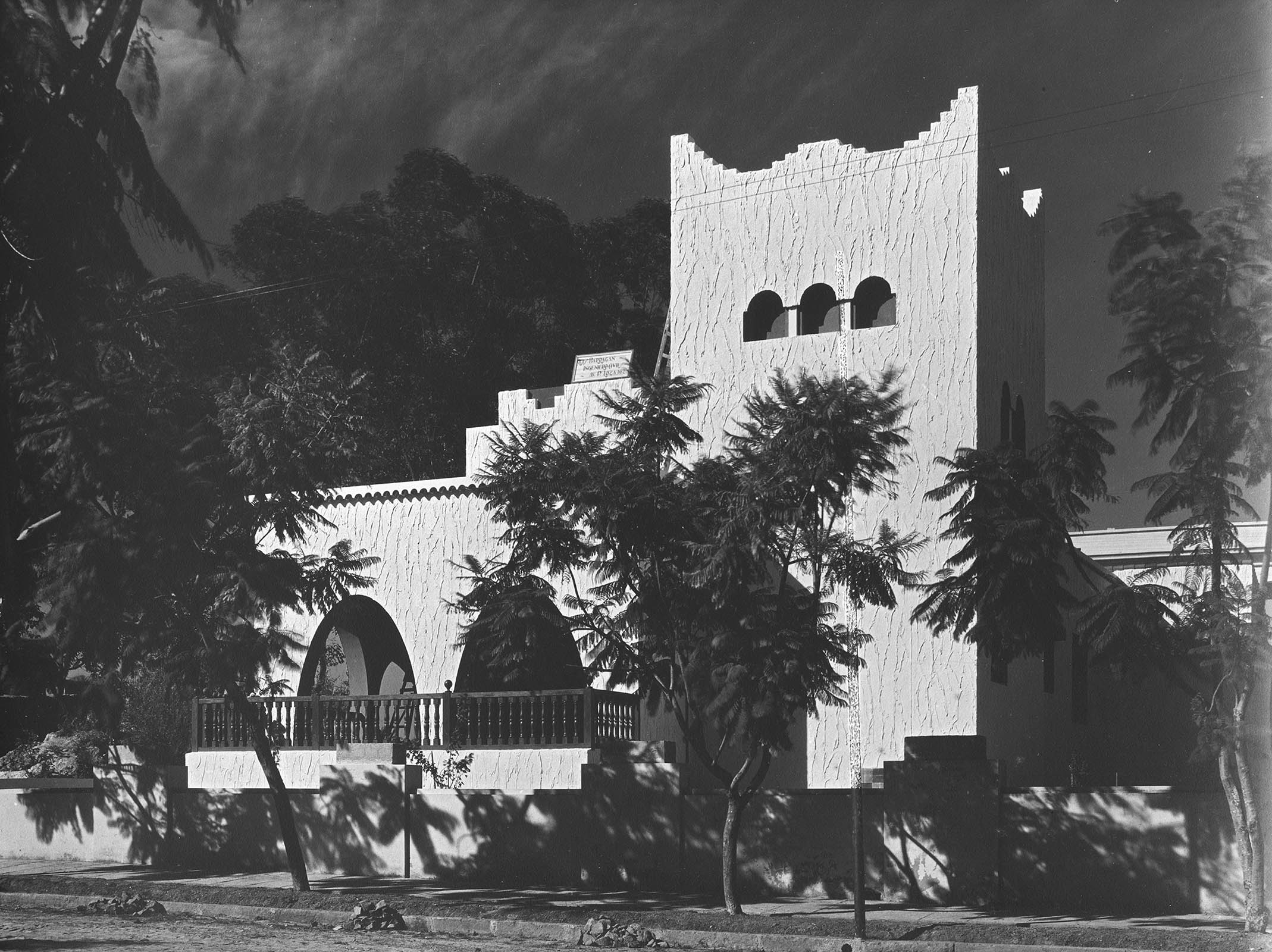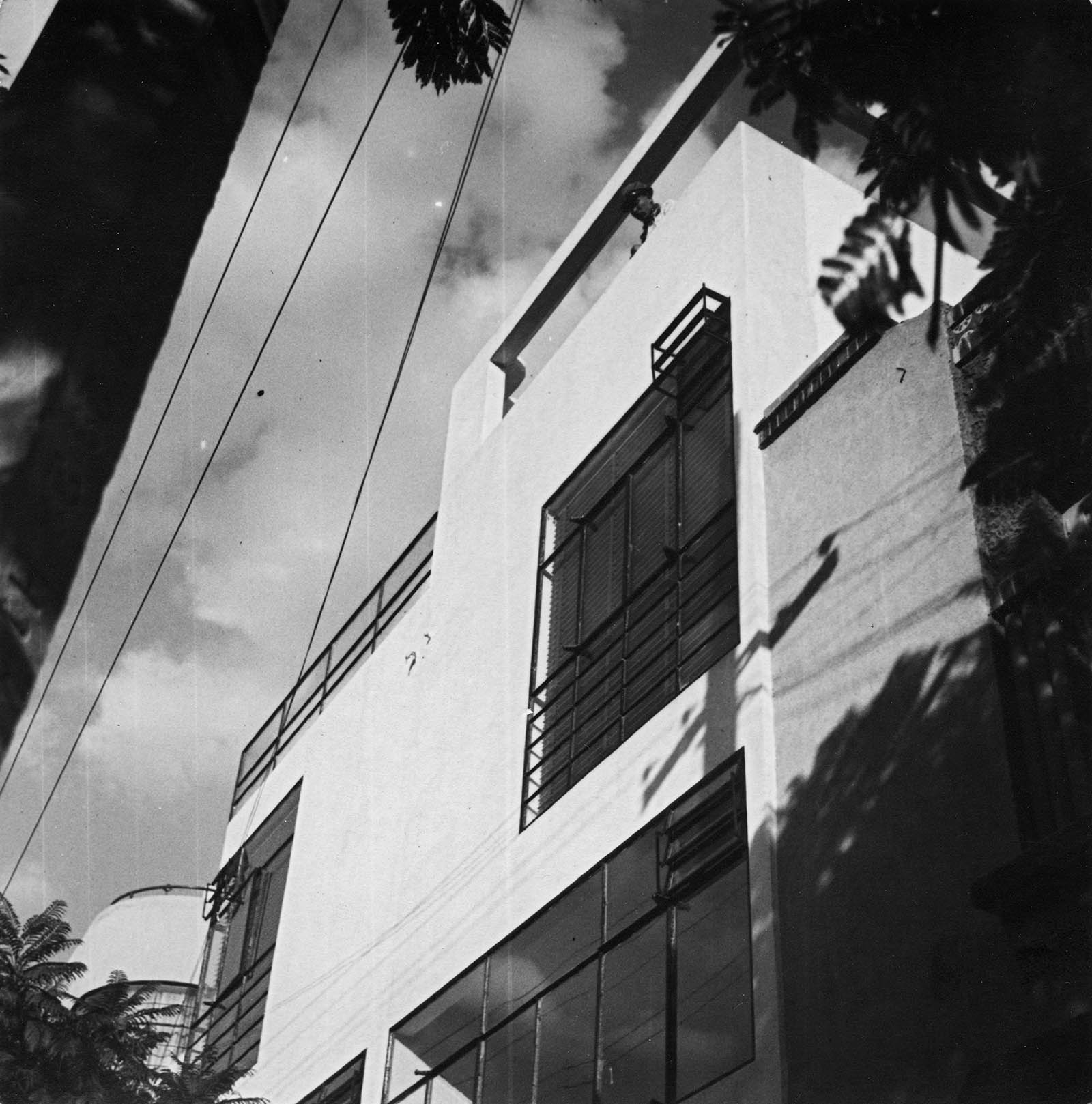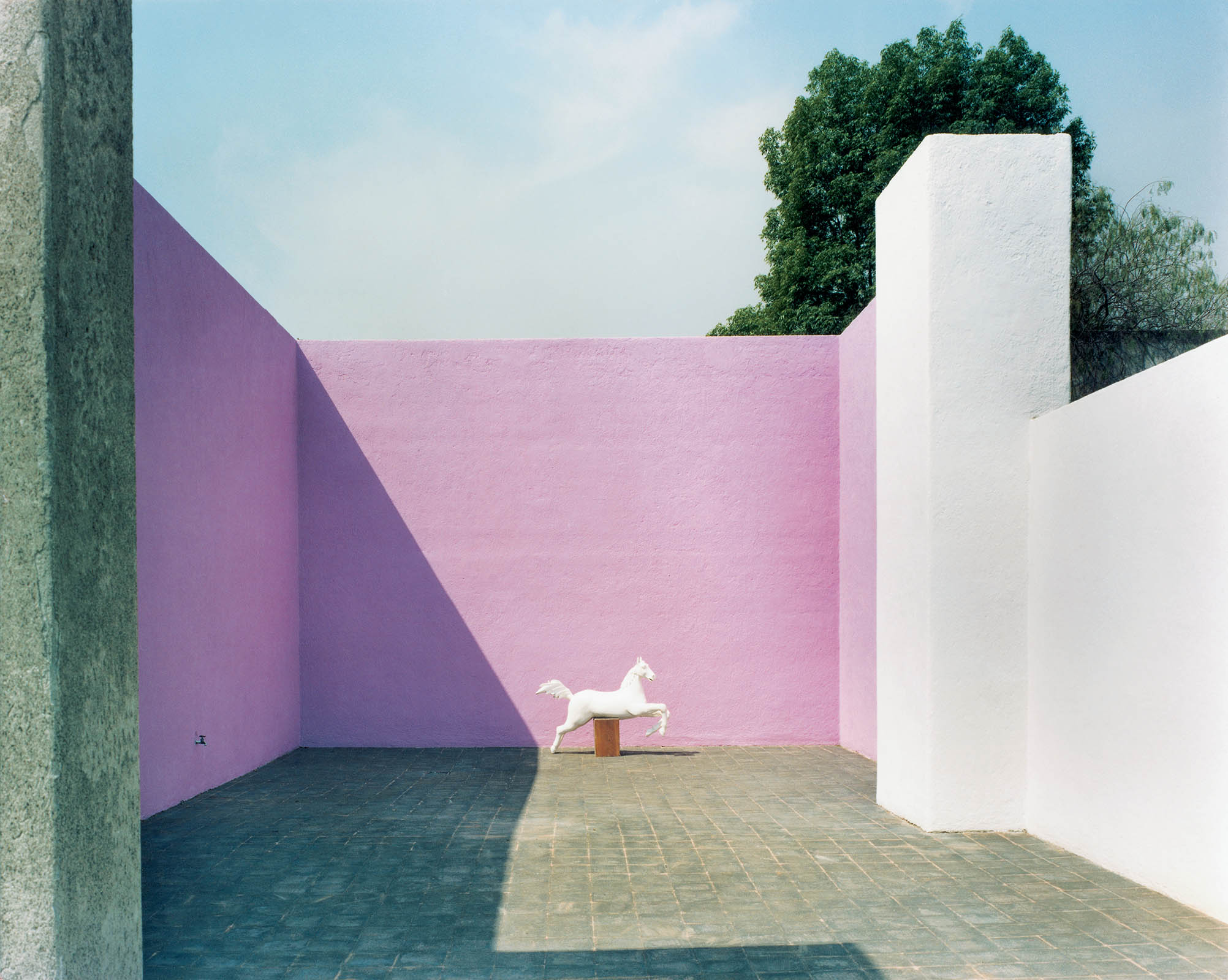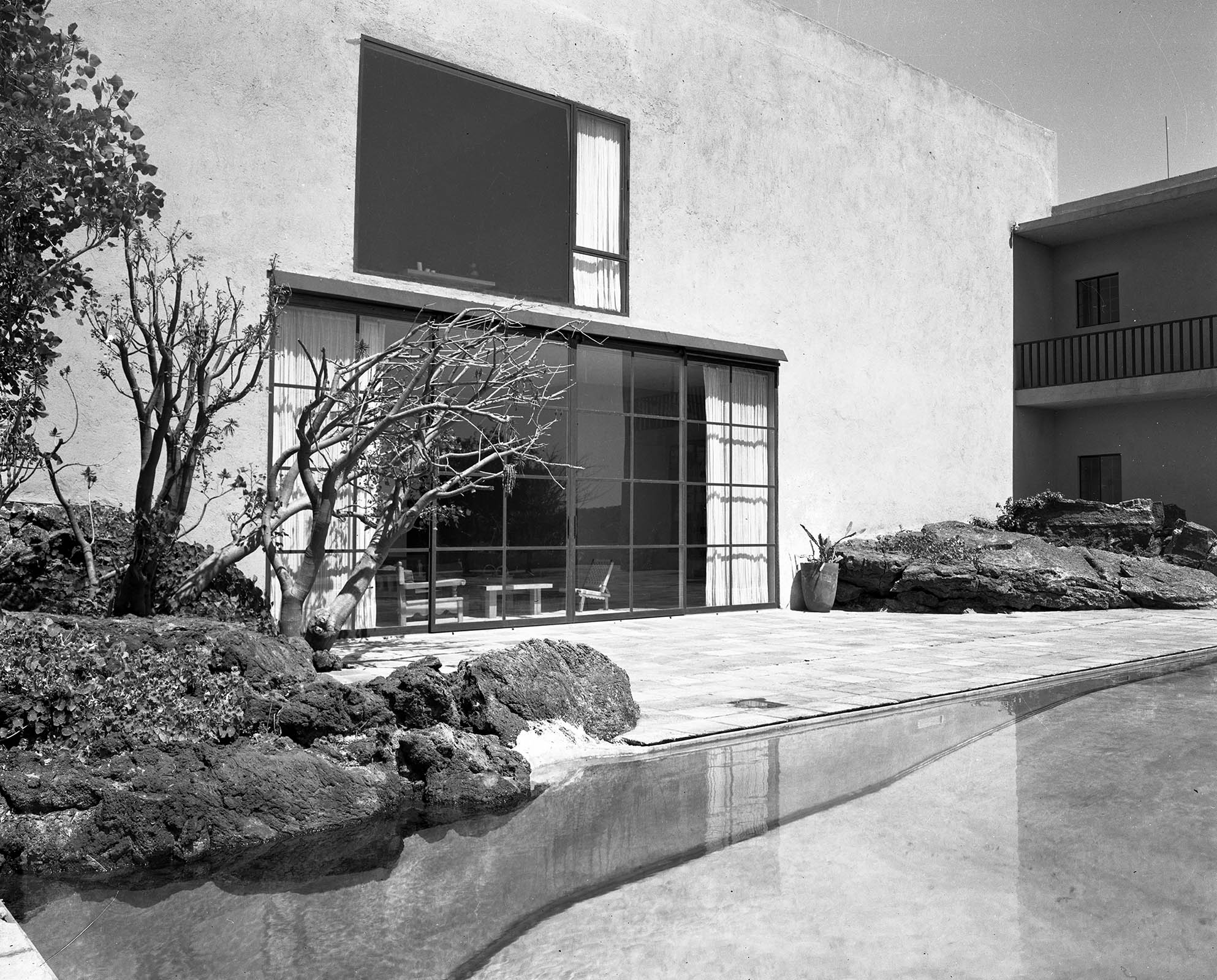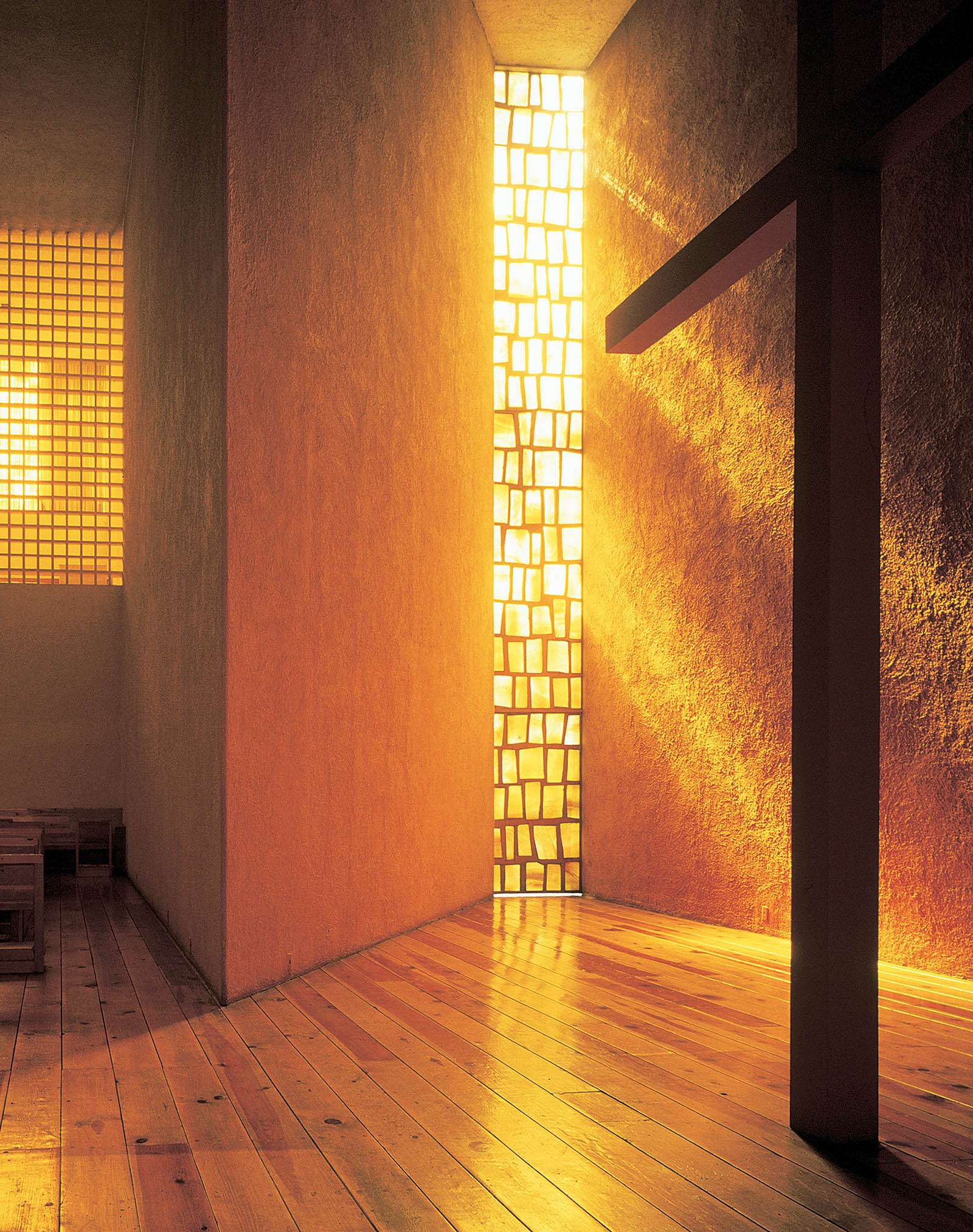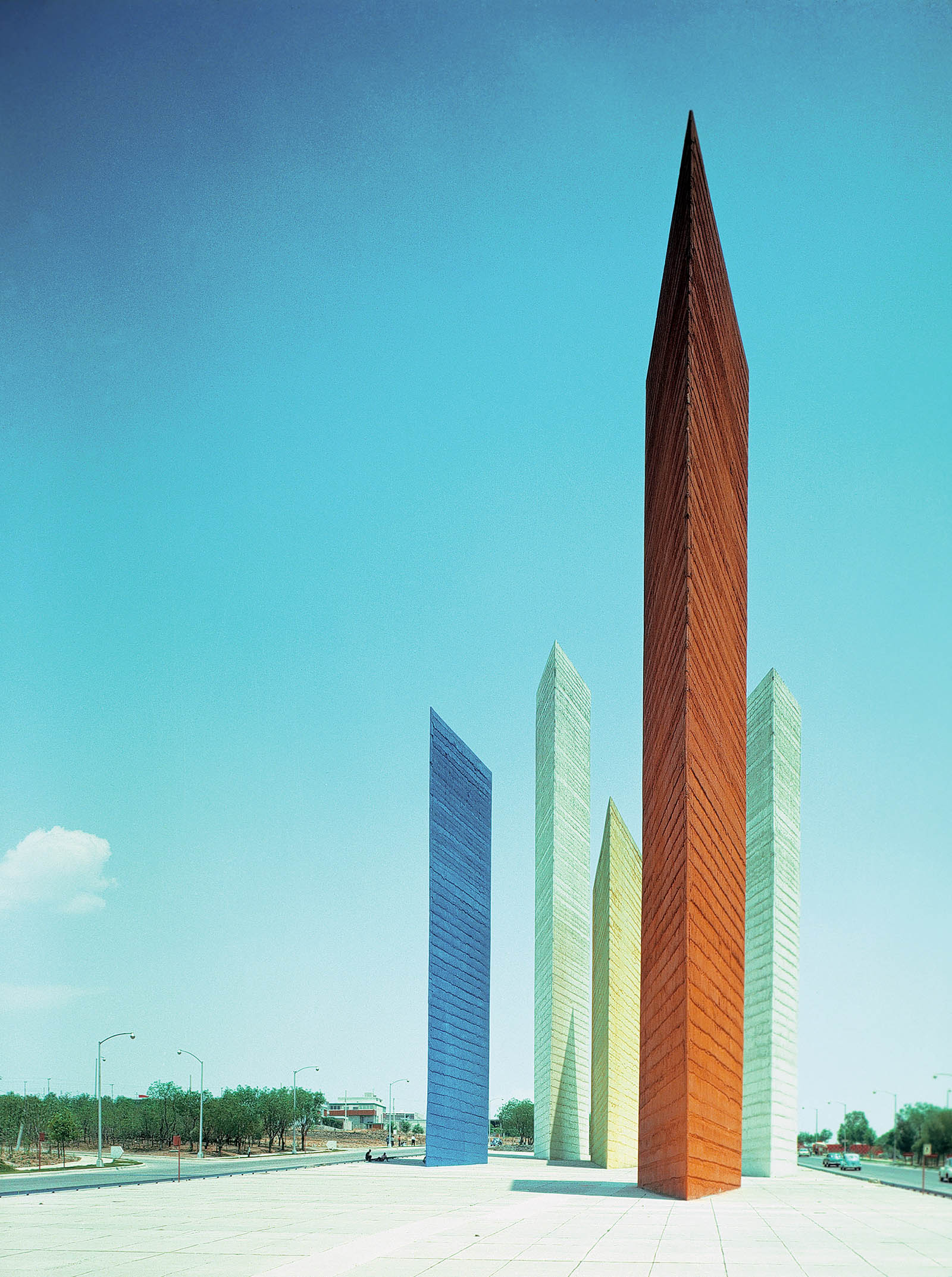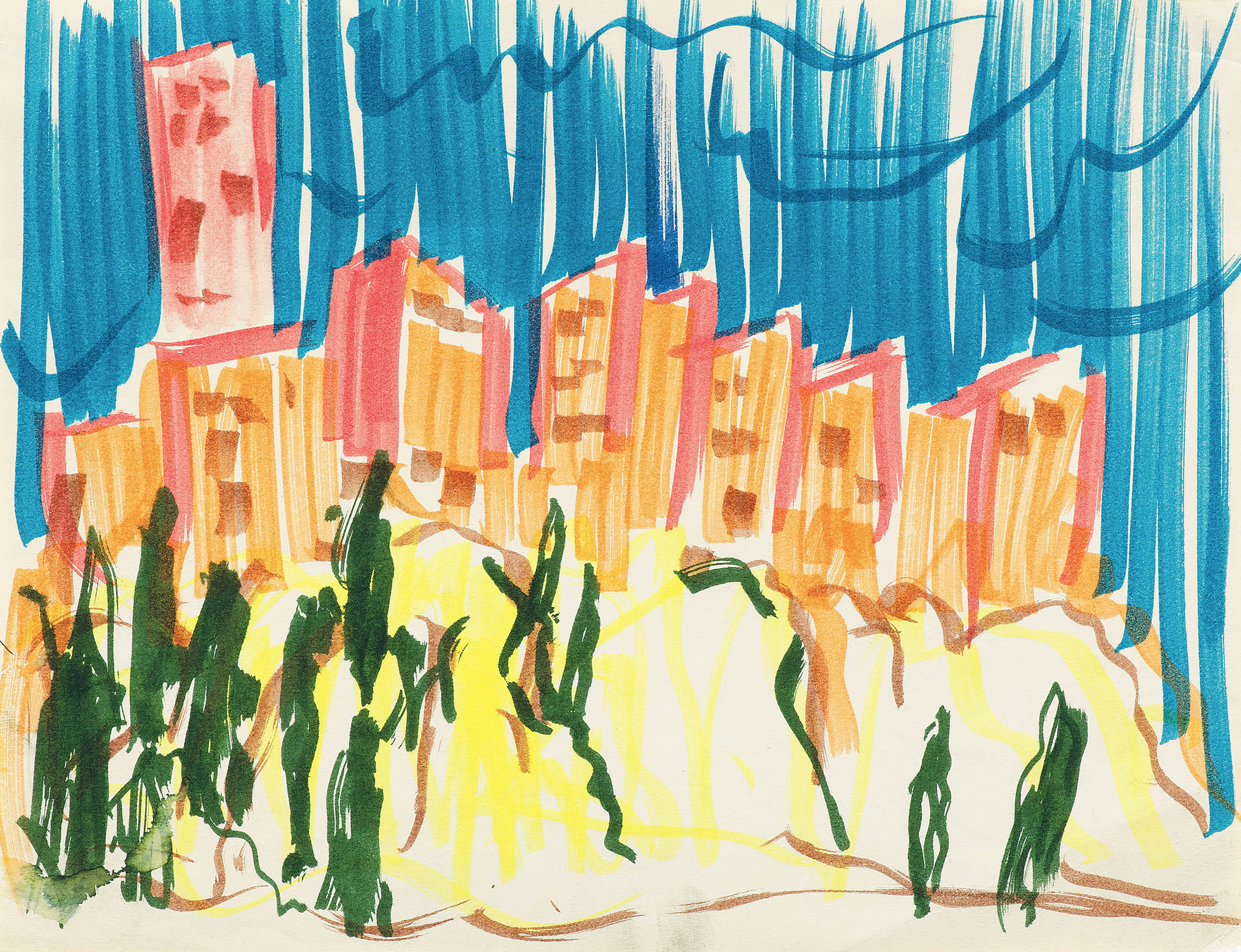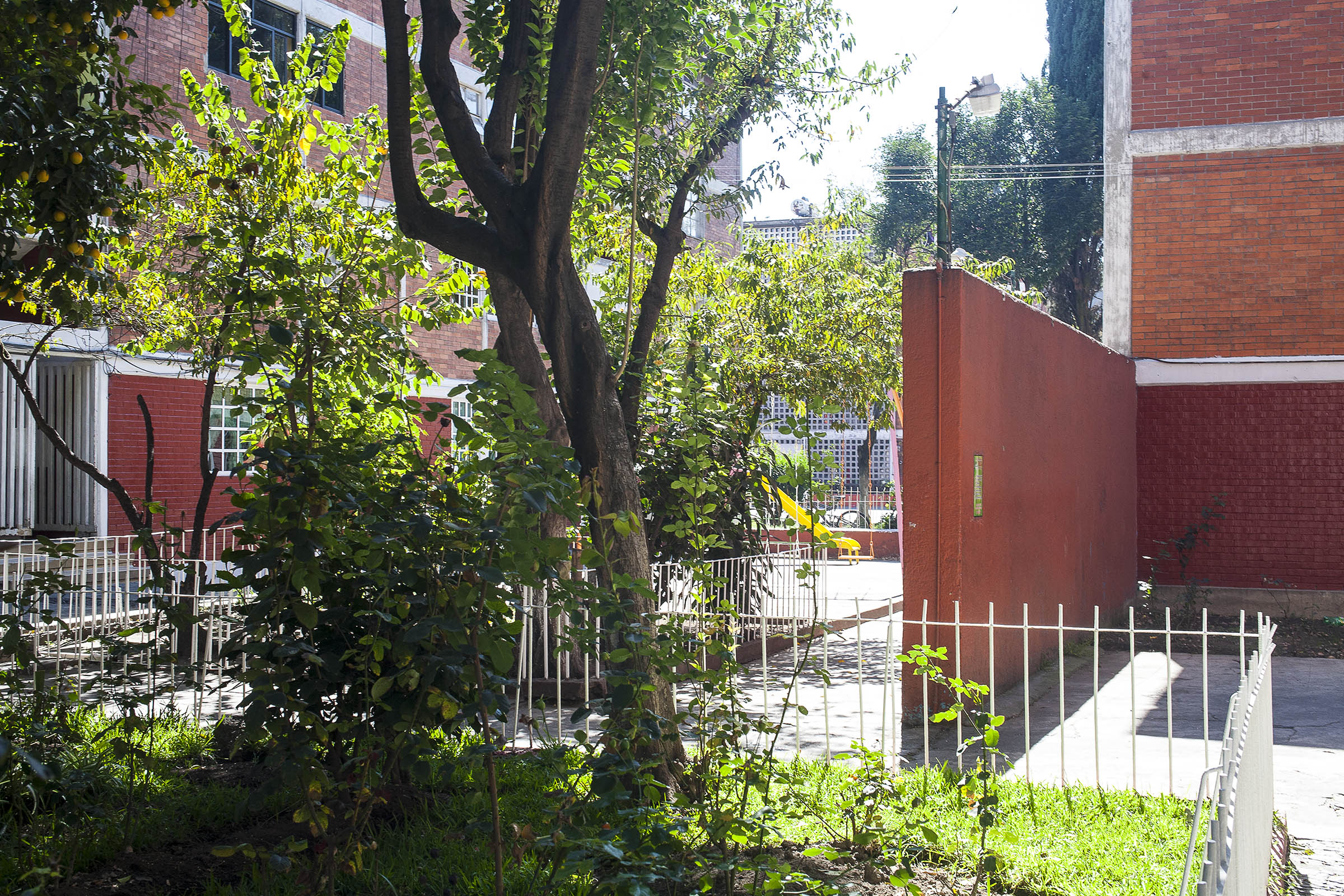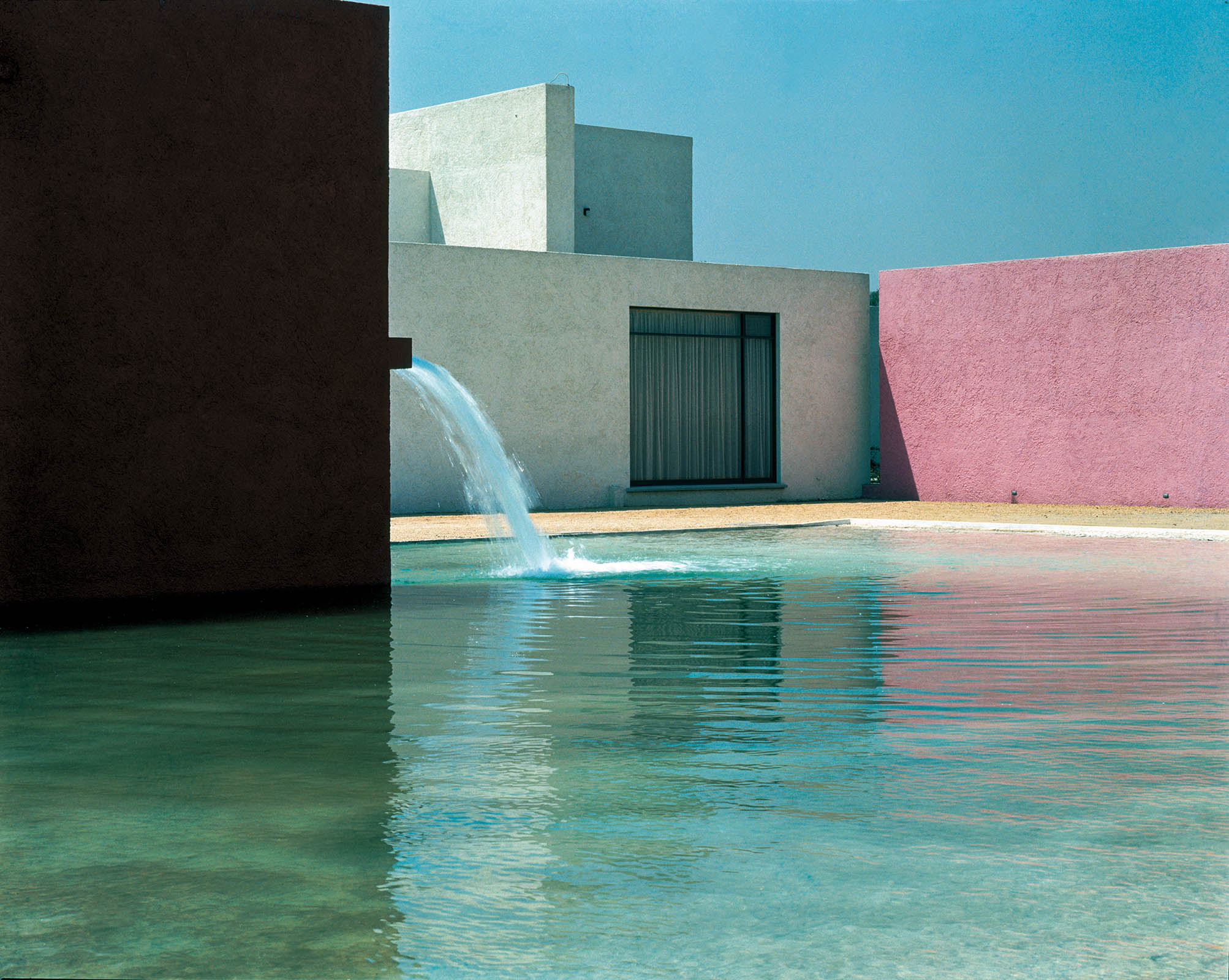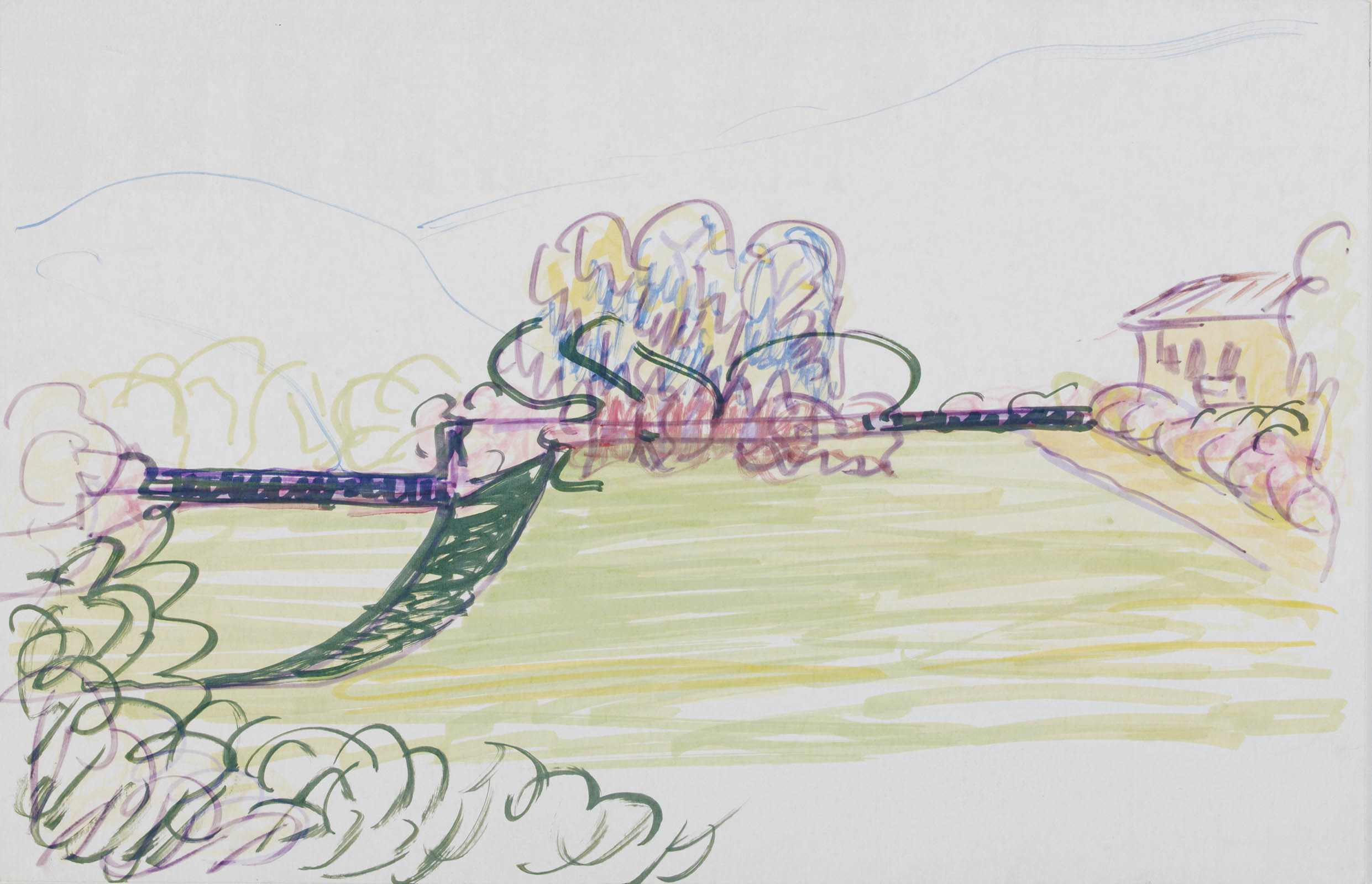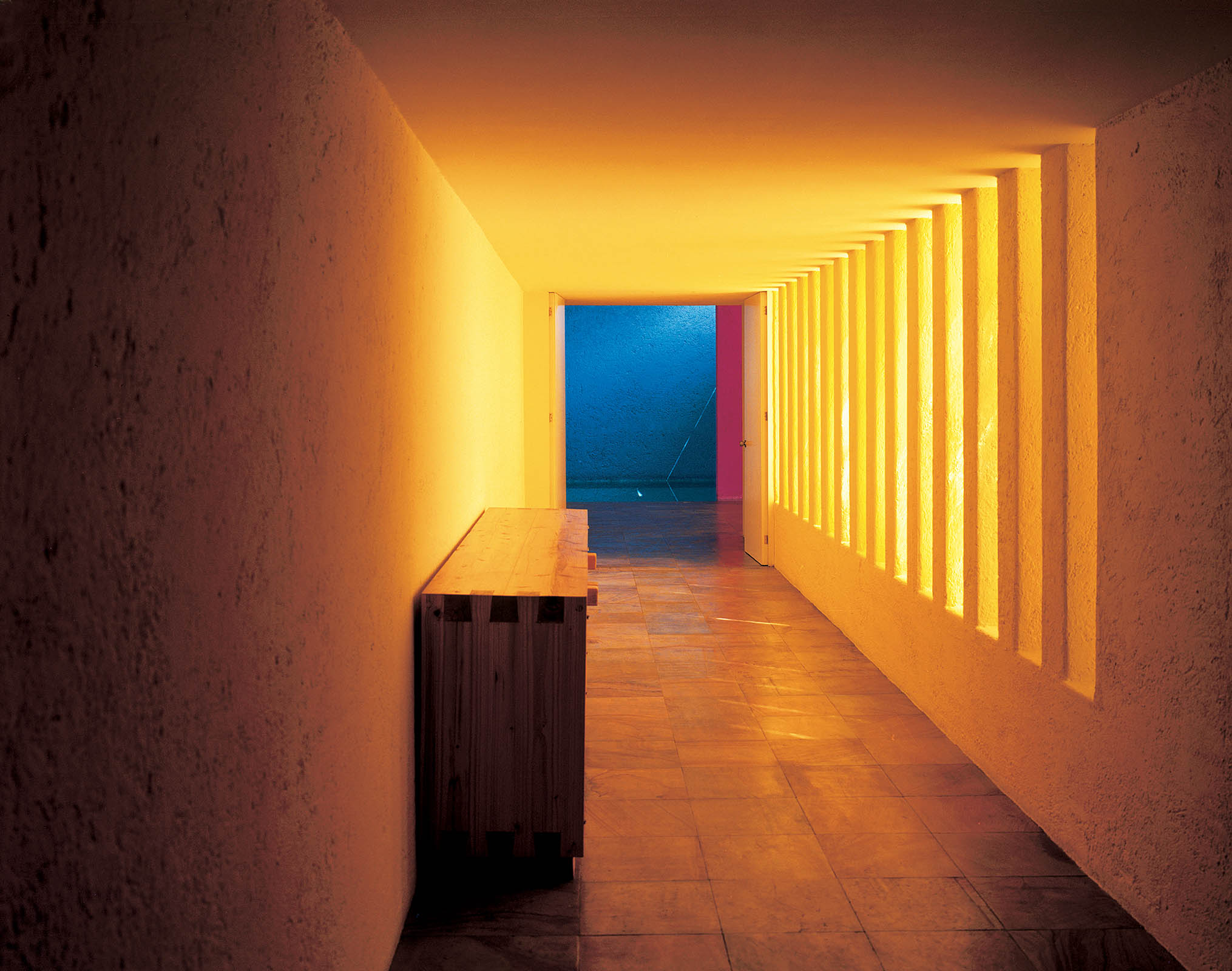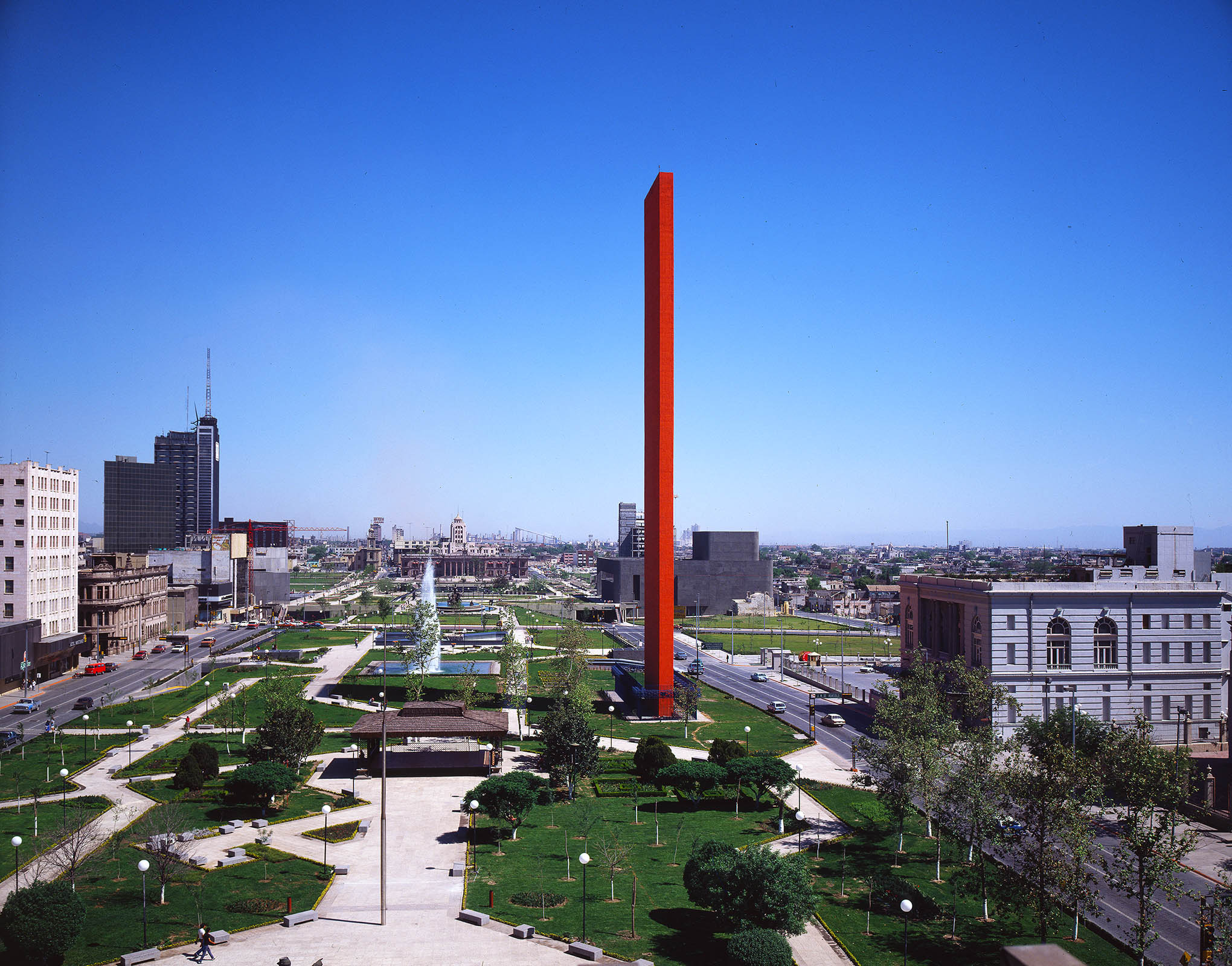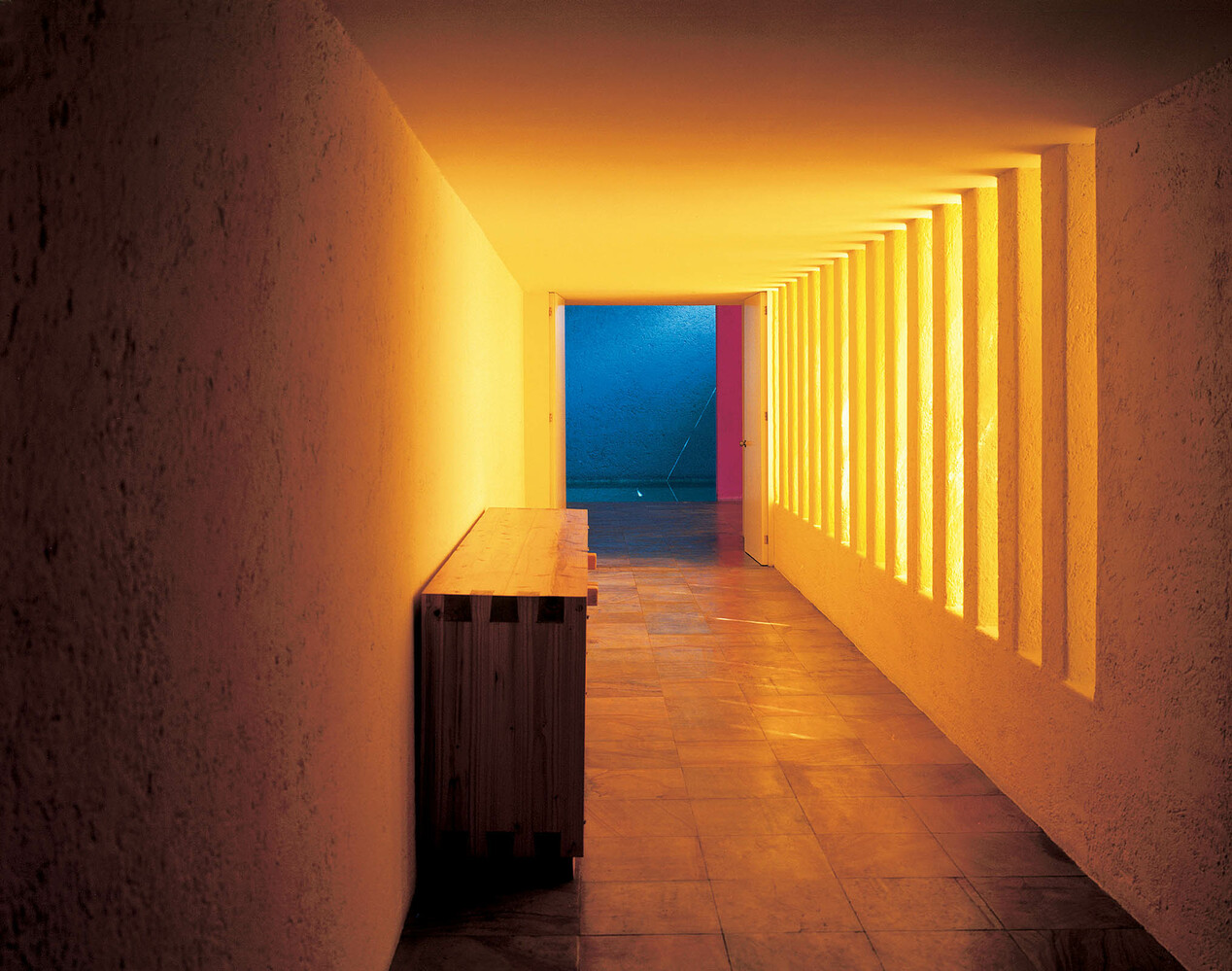
The Gilardi House was commissioned by advertising executive Francisco Gilardi to be built on a plot in a densely populated area of the capital, south of Bosque de Chapultepec park and not far from Barragán’s own residence.
After first considering a refurbishment of the extant dwelling on the site, the client ultimately decided to construct an entirely new structure suited to his personal needs and wishes. A bachelor with an active social life, he wanted appropriate spaces for entertaining guests and an indoor swimming pool for his daily use. The resulting design became one of Barragán’s most appreciated works.
A third of the rectangular plot, measuring ten metres wide by thirty-five metres deep in total, was originally occupied by a two-storey dwelling dating from the 1930s. This structure stood directly on the street frontage and was flanked by neighbouring houses. A large patio at the back was partially occupied by a pool. The elongated shape of the plot and the programme specified by Gilardi led to an introverted spatial composition for the new design, centred on an existing jacaranda tree.
The general organization of the site was outlined by Barragán in a series of preliminary sketches. These schematic plans show a three-storey house set along the street, a pool contained in a separate volume at the back of the plot, and a patio in the middle. The jacaranda tree stands on the east side of this central open space, while a narrow longitudinal block runs along the west boundary, connecting the residence with the pool. Between September and November 1975, Barragán progressively defined the functional and internal layout, mainly in plans, but complemented by a few alternative elevations. The client participated in the design’s evolution, as evidenced by handwritten notes appearing in the margins of several studies.

Although Gilardi approved the volumetric configuration, he expressed concerns regarding the internal arrangement, finding it overly formal. One change he specifically requested was to move the dining room from the upper level to the ground floor, close to the swimming pool. The rather unconventional decision to merge the dining and pool areas not only simplified the spatial organization of the upstairs living room and library, but also triggered a radical transformation of the structure at the rear of the plot. What had originally been conceived as a purely functional space became the focal point of the house, and Barragán devoted all of his sculptural and chromatic skills to its composition. Several sketches testify to the painstaking search for a harmonious relationship between the horizontal surface of the water, the paved portion of the floor, the position of a vertical wall element, and the size and location of a skylight that provides overhead lighting.
This study phase was followed by the production of detailed structural drawings in April 1976. The final drawings, which include the placement of furnishings, are dated January and February 1977. Covering a total area of approximately 430 square metres, the definitive house design comprises a garage, kitchen, service rooms and swimming pool with dining area on the ground floor; a living room and library on the first floor; and two additional bedrooms on the top storey. The interior articulation is simplified according to rational criteria, while the building features a bold colour palette consisting of bright pink for the front and rear facades, light purple for the eastern boundary wall and white for the auxiliary volumes. As was customary for Barragán’s method of work, further adjustments were implemented during construction, including the final selection of colour hues, which he modulated to account for the effects of natural light on the texture and size of the walls.
Particular attention was given to the colour of the gallery leading to the swimming pool, where the bright yellow hue on the internal walls and ceiling was also directly applied to the unframed panes of glass inserted in the vertical openings of the patio wall, thereby reinforcing and intensifying its vibrant visual effect. The view from the central hall to the open door at the end of the corridor is suffused in a yellow glow that frames the back wall of the pool beyond it, painted a bright blue. This wall surface is enlivened by the reflections of light in the water at its base, and also by the radiant magenta colour of the free wall element that conceals the skylight. Presumably providing an additional structural support for the roof, this partial wall also functions as a chromatic and compositional gesture.
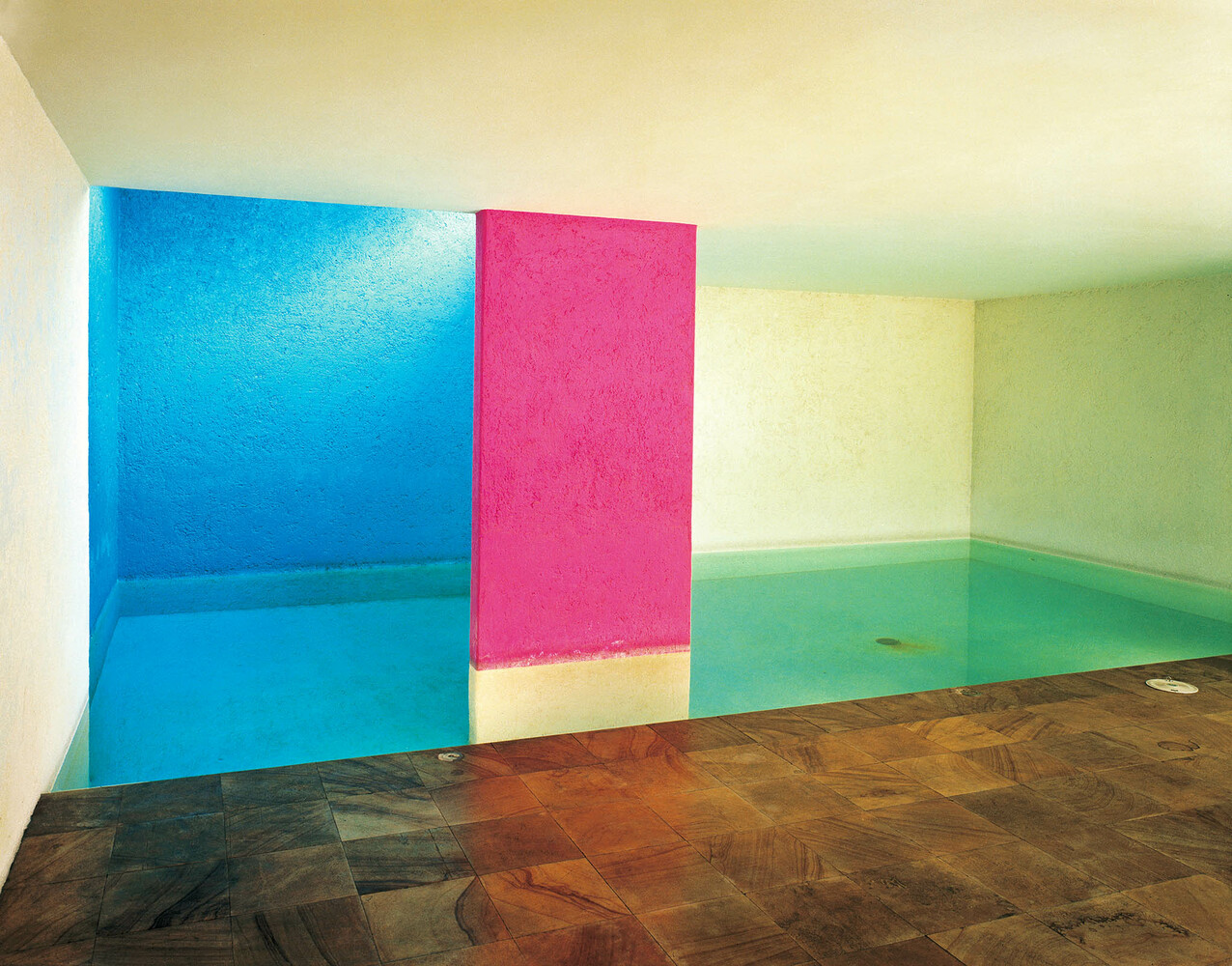
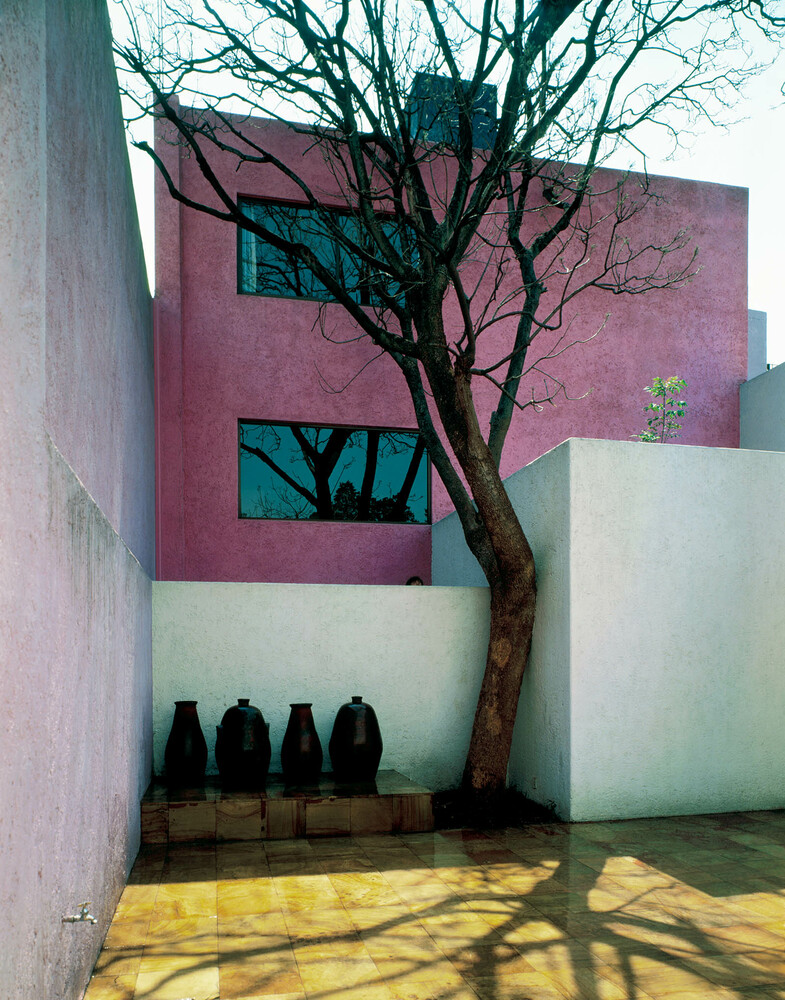
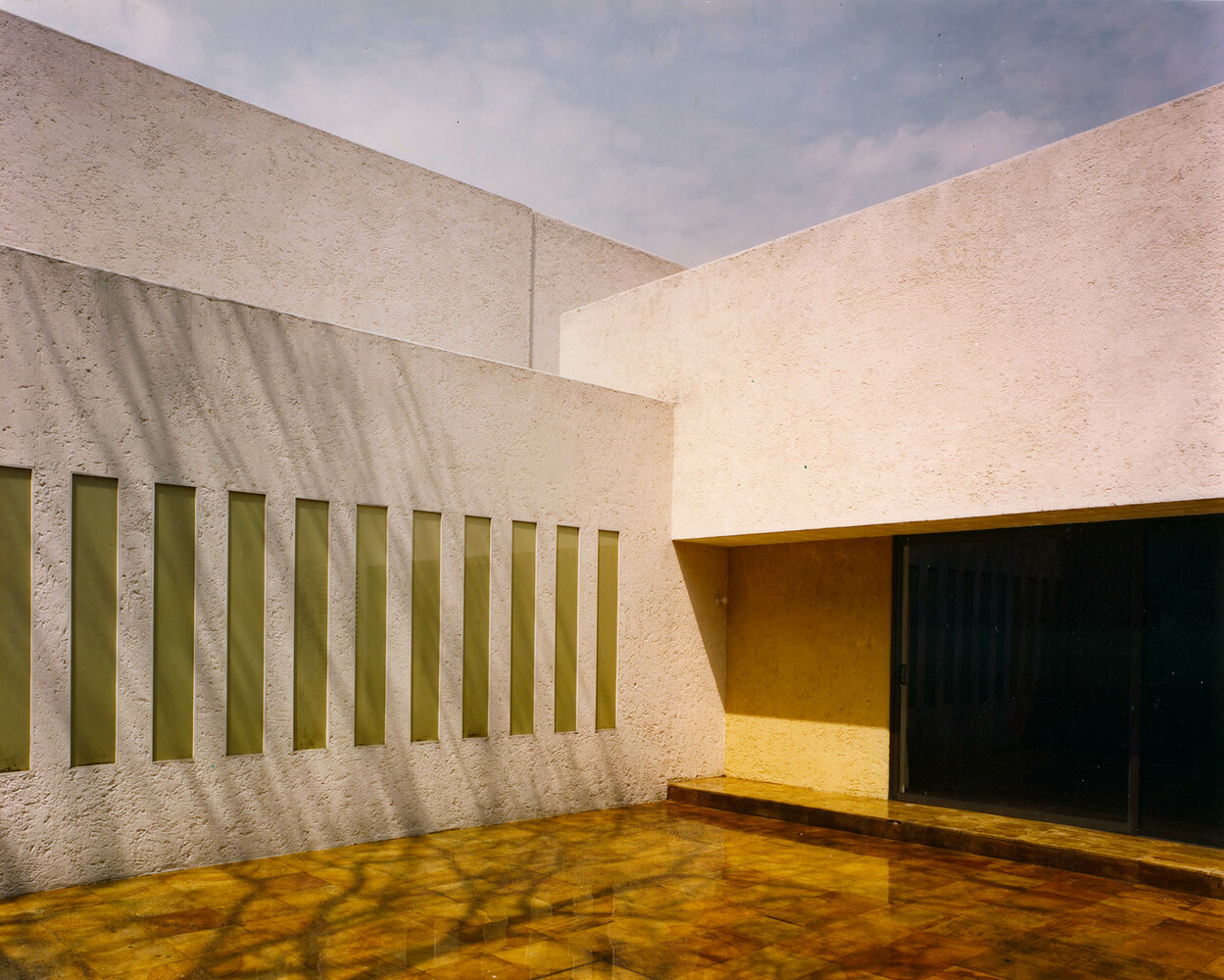
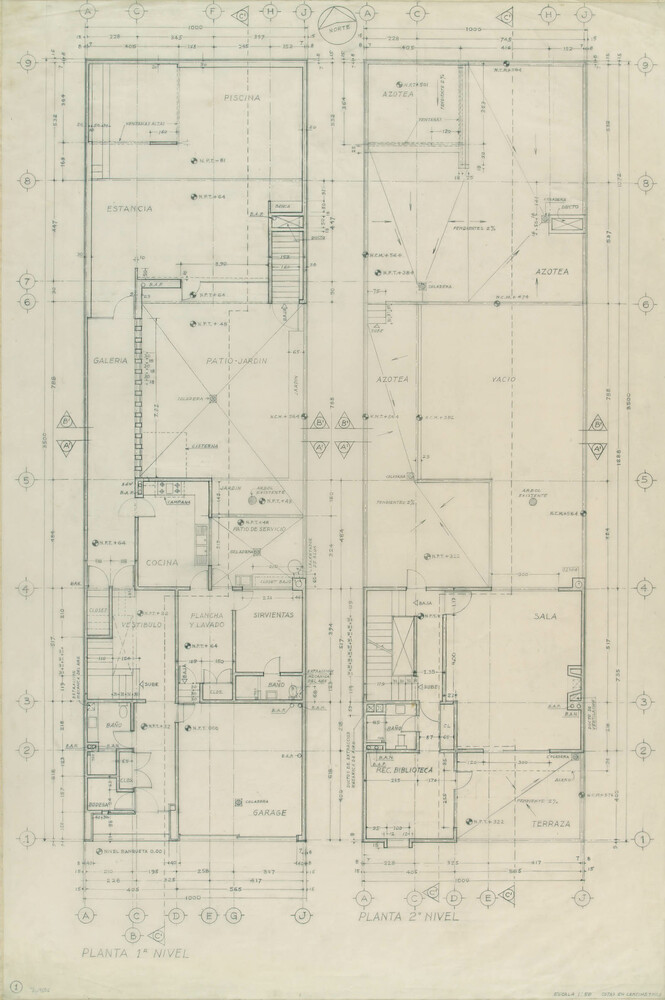
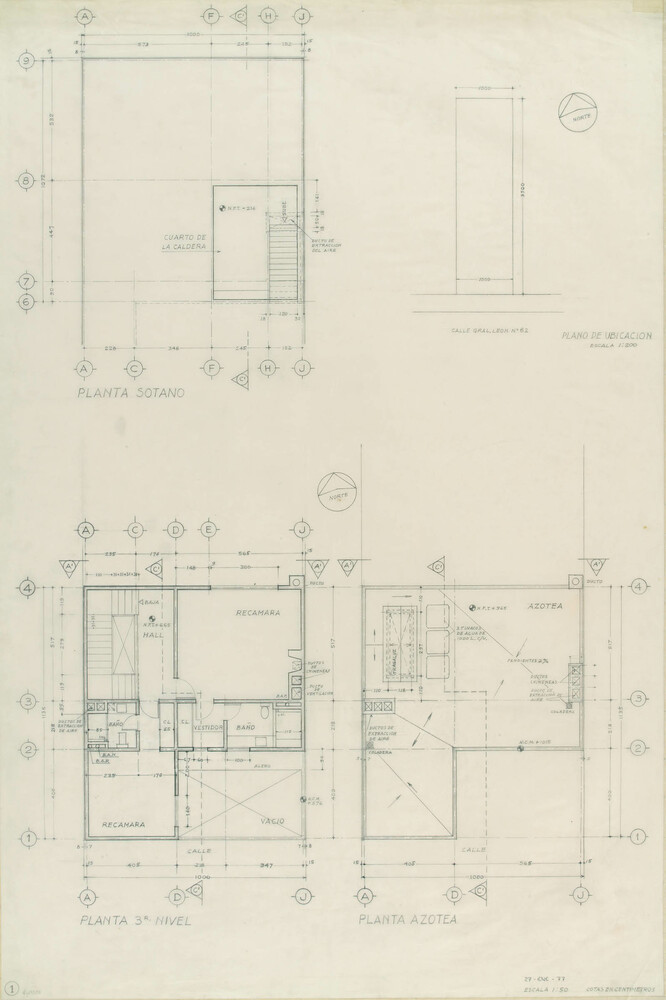
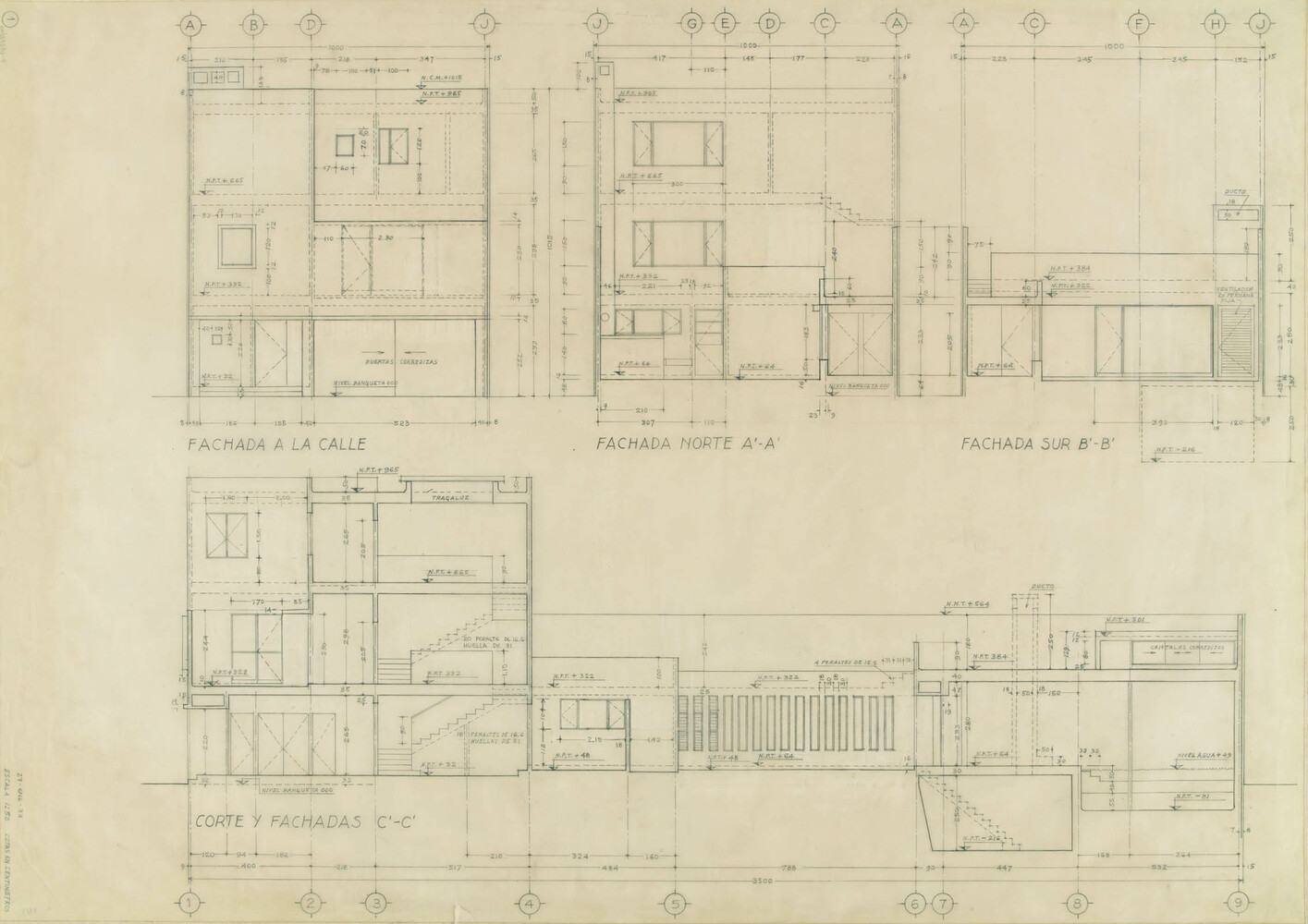
Colour is an essential component of this architectural ensemble – not merely as an applied layer but as a key aspect of the house’s complex spatiality. The interaction of structural elements with natural light and water affords visitors the rare experience of a full physical immersion. Armando Salas Portugal’s images of the building contributed to its attainment of iconic status, and throughout the years the Gilardi House has been widely featured in fashion, design and lifestyle publications.
Barragán additionally devoted his attention to the interior design of the residence, not only outfitting the spaces with built-in components, but also choosing some furniture and even giving the client a colonial wardrobe from his own possessions. Local solid materials, simple finishes and vernacular accents, combined with the vibrant colours and textures of the walls, engage in a dialogue with contemporary artworks and pieces of folk art. This harmonious composition imbues the domestic environment with a sense of privacy and serenity, setting it apart from the surrounding urban context and creating a home that feels intensely personal and universal at the same time.




